Paul Bishop's Blog, page 39
September 15, 2015
SVENGALI WITH A BADGE

Every writer loves to get a good review and cries in their spilled milk over a bad one. It's the way of the writing life...The most special reviews, however, come from readers who not only 'got' what the writer was trying to accomplish, but is also able to communicate it...SVENGALI WITH A BADGELIE CATCHERSBLACKIE NOIRJaded by the profusion of crime, mystery, suspense, and buddy police procedural novels out there? Well, Lie Catchers might very well be the shot in the arm you need to jar you from your torpor. There are hundreds of novelists cranking out police procedurals who are clueless (no pun intended) about actual police work, just as there are dozens of cop authors whose literary skills don’t transcend writing traffic citations. Rest assured, Paul Bishop doesn’t fall into either category. Bishop is a gifted, competent, talented novelist, with the rock-solid street cred attained through 35 years of service ith the LAPD -- first as a patrol officer, then as a high ranking detective. The man is real, as is his work. Lie Catchers is a highly entertaining read that goes beyond the pall of most
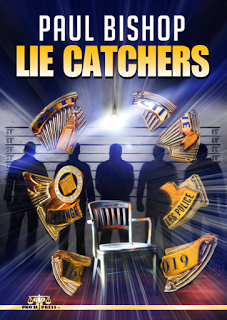 contemporary crime / cop fiction. Strongly plotted, I found the backstory regarding the arcane Martin family, and Changeling, reminiscent of some of Ross MacDonald’s best Lew Archer novels in eerie tone and mood. Good as the plot (a cornucopia of psychological acrobatics) is, the dual protagonists, Ray Pagan and Calamity Jane Randall, give the novel its heart, soul, and life.
contemporary crime / cop fiction. Strongly plotted, I found the backstory regarding the arcane Martin family, and Changeling, reminiscent of some of Ross MacDonald’s best Lew Archer novels in eerie tone and mood. Good as the plot (a cornucopia of psychological acrobatics) is, the dual protagonists, Ray Pagan and Calamity Jane Randall, give the novel its heart, soul, and life.The narrative flows from the first person POV of Calamity Jane Randall, and easily lends access to her inner emotional status: that of a mildly bitter, pessimistic, confused, career cop at a crossroad of both life and career. She’s emotionally battered, physically damaged (severe gunshot wound), yet radiates a stubborn strength. I found her immediately likeable and highly appealing. You just know that once she finds herself she’ll be a force to be reckoned with. Calamity rocks!
Helping Calamity to find herself is her new partner / mentor Ray Pagan. Veteran detective. Superstar interrogator. Master manipulator. Hero to many of his peers, bane to many others, Pagan is a maverick, one who leads with nary a glance over his shoulder to see if anyone is following. A many faceted renaissance man (Derek Flint?), at first Pagan seems smug and overbearing. In Calamity’s early opinion, insufferable. But, as Pagan’s inner psyche is revealed, we find a compassionate, devoted, champion of and seeker of truth. By mid-book it’s easy to find yourself rooting for Pagan.
Both characters are well developed, and emotionally electric. If that’s not enough, turns out both Pagan and Randall are gifted (cursed?) with separate and unique sensory powers that enhance their ability to discern truth from fiction. This angle is skillfully, and subtly, woven into the narrative, never seeming overdone or too much of a stretch.
Lie Catchers is solid escapist literature, served up by a pro, and guaranteed to entertain. Highly recommended.
ADDENDUM: The two bonus non-fiction chapters, on Bishop’s first and last busts, alone are worth the very modest Kindle price.
Published on September 15, 2015 17:48
VINTAGE LAPD: POLICEWOMAN OF THE YEAR 1952
 Policewoman Florence Corberly joined the LAPD in 1948. In 1952, she was selected to work as a decoy to catch a dangerous rape suspect identified as Joe Parra. When Coberly encountered Para, a physical confrontation ensued.Detectives moved in and Parra was shot and killed…
Policewoman Florence Corberly joined the LAPD in 1948. In 1952, she was selected to work as a decoy to catch a dangerous rape suspect identified as Joe Parra. When Coberly encountered Para, a physical confrontation ensued.Detectives moved in and Parra was shot and killed…
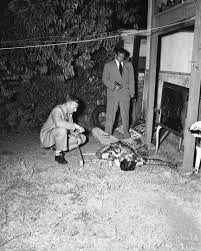 A County Coroner's inquest followed and cleared all detectives. Coberly was the star witness at the inquest and was later named Policewoman of the Year…
A County Coroner's inquest followed and cleared all detectives. Coberly was the star witness at the inquest and was later named Policewoman of the Year…
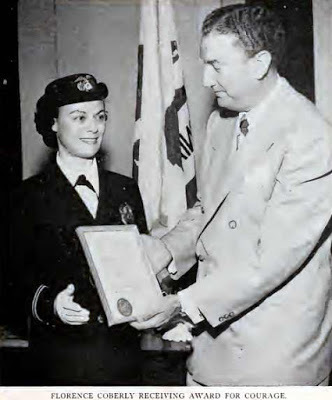 In 1958, Coberly and her mother, Gertrude, entered a market in the San Fernando Valley. When Gertrude began putting items in her purse, LAPD officer George Sellinger, working off-duty as a store detective, arrested the two women for theft. Coberly was subsequently cleared in court. However, in an Internal Affairs hearing, she was found guilty for being present when a crime was committed...
In 1958, Coberly and her mother, Gertrude, entered a market in the San Fernando Valley. When Gertrude began putting items in her purse, LAPD officer George Sellinger, working off-duty as a store detective, arrested the two women for theft. Coberly was subsequently cleared in court. However, in an Internal Affairs hearing, she was found guilty for being present when a crime was committed...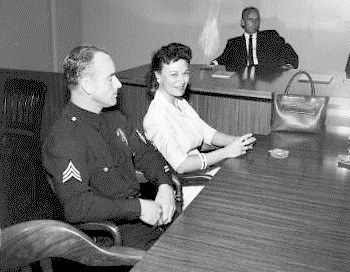 As a result, Coberly was fired by Chief William H Parker in 1958. In 1959, Coberly filed an appeal to get her job and badge back, but the ruling stood...
As a result, Coberly was fired by Chief William H Parker in 1958. In 1959, Coberly filed an appeal to get her job and badge back, but the ruling stood...Thx to Chris James...
Published on September 15, 2015 10:53
VINTAGE LAPD: POLICEWOMAN OF TE YEAR 1952
 Policewoman Florence Corberly joined the LAPD in 1948. In 1952, she was selected to work as a decoy to catch a dangerous rape suspect identified as Joe Parra. When Coberly encountered Para, a physical confrontation ensued.Detectives moved in and Parra was shot and killed…
Policewoman Florence Corberly joined the LAPD in 1948. In 1952, she was selected to work as a decoy to catch a dangerous rape suspect identified as Joe Parra. When Coberly encountered Para, a physical confrontation ensued.Detectives moved in and Parra was shot and killed…
 A County Coroner's inquest followed and cleared all detectives. Coberly was the star witness at the inquest and was later named Policewoman of the Year…
A County Coroner's inquest followed and cleared all detectives. Coberly was the star witness at the inquest and was later named Policewoman of the Year…
 In 1958, Coberly and her mother, Gertrude, entered a market in the San Fernando Valley. When Gertrude began putting items in her purse, LAPD officer George Sellinger, working off-duty as a store detective, arrested the two women for theft. Coberly was subsequently cleared in court. However, in an Internal Affairs hearing, she was found guilty for being present when a crime was committed...
In 1958, Coberly and her mother, Gertrude, entered a market in the San Fernando Valley. When Gertrude began putting items in her purse, LAPD officer George Sellinger, working off-duty as a store detective, arrested the two women for theft. Coberly was subsequently cleared in court. However, in an Internal Affairs hearing, she was found guilty for being present when a crime was committed... As a result, Coberly was fired by Chief William H Parker in 1958. In 1959, Coberly filed an appeal to get her job and badge back, but the ruling stood...
As a result, Coberly was fired by Chief William H Parker in 1958. In 1959, Coberly filed an appeal to get her job and badge back, but the ruling stood...Thx to Chris James...
Published on September 15, 2015 10:53
VINTAGE LAPD: POLICEWOMAN NO. 2
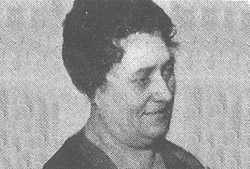 Los Angeles Police Department's second policewoman, Minnie Barton, befriended several homeless girls while working with young women on parole or probation. Often these girls had nowhere else to go and no prospects for the future, so she attempted to help them rebuild their lives by taking them into her home and offering them vocational training.
Los Angeles Police Department's second policewoman, Minnie Barton, befriended several homeless girls while working with young women on parole or probation. Often these girls had nowhere else to go and no prospects for the future, so she attempted to help them rebuild their lives by taking them into her home and offering them vocational training.
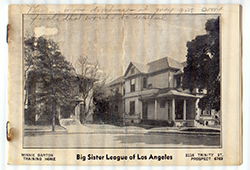 In 1917, Barton and the wife of L.A. Police Chief John Butler met with prominent local women at the downtown Broadway department store to form the Big Sister League an establish the Minnie Barton Home. In those early years, Barton and her supporters were primarily interested in women just released from jail. Often younger women, particularly first offenders, were committed to the Barton Home in lieu of jail sentences.
In 1917, Barton and the wife of L.A. Police Chief John Butler met with prominent local women at the downtown Broadway department store to form the Big Sister League an establish the Minnie Barton Home. In those early years, Barton and her supporters were primarily interested in women just released from jail. Often younger women, particularly first offenders, were committed to the Barton Home in lieu of jail sentences.
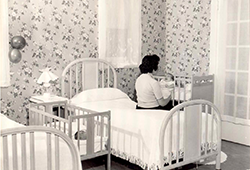 In 1926, this temporary facility became the Bide-a-Wee Home for pregnant and unwed or forsaken women, often left destitute as a result of the father's jail confinement or abandonment. The Home has since expanded and is now known as The Big Sister League, a United Way agency.
In 1926, this temporary facility became the Bide-a-Wee Home for pregnant and unwed or forsaken women, often left destitute as a result of the father's jail confinement or abandonment. The Home has since expanded and is now known as The Big Sister League, a United Way agency.
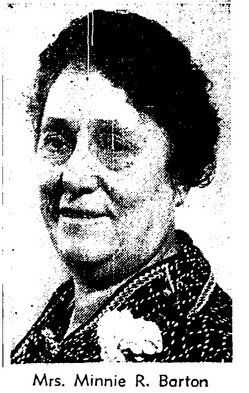
Published on September 15, 2015 08:48
VINTAGE LAPD: THE FIRST LATINA POLICEWOMAN
 Josephine Serrano was the first Latina appointed as a policewoman in the Los Angeles Police Department. The fee she paid for the application was just one dollar, but it cost her far more. Not only was her family against her joining the LAPD, but her fiancé broke off their engagement because of it. She was also bucking a feeling of mistrust in the Latino community toward the police. However, Collier, who had lost her Rosie-the-Riveter job at Lockheed at the end of World War II, needed work and felt she could be a liaison between the community and the LAPD. Of the two hundred women who tested to join the force, twenty-one were accepted and only nine – including Collier – made it through training to become full-fledged officers. "The women had no graduation ceremony, received no diploma, nor were they given a gun," wrote Gail Ryan, historian for the Women Police Officers Assn. of California. After graduating from the police academy, Collier was assigned to a jail in Lincoln Heights where she and other policewomen wore nurses' uniforms. Two years later, they went through additional training and were issued guns. Collier was eventually given a beat to walk in the Pershing Square area downtown, which she and other policewomen did undercover. Wearing a skirt and a hat and gloves, they walked the beat in high heels. In 1948, she married a fellow officer, Jack Collier, and she stayed with the force until 1960 when she retired because of a back problem. She later worked as a counselor with the Job Corps. During her career, Collier smashed the lines dividing women from many assignments in the early history of the LAPD. Those sacrifices and her commitment opened the door for many women and Latinas in the department, setting the stage for future generations.
Josephine Serrano was the first Latina appointed as a policewoman in the Los Angeles Police Department. The fee she paid for the application was just one dollar, but it cost her far more. Not only was her family against her joining the LAPD, but her fiancé broke off their engagement because of it. She was also bucking a feeling of mistrust in the Latino community toward the police. However, Collier, who had lost her Rosie-the-Riveter job at Lockheed at the end of World War II, needed work and felt she could be a liaison between the community and the LAPD. Of the two hundred women who tested to join the force, twenty-one were accepted and only nine – including Collier – made it through training to become full-fledged officers. "The women had no graduation ceremony, received no diploma, nor were they given a gun," wrote Gail Ryan, historian for the Women Police Officers Assn. of California. After graduating from the police academy, Collier was assigned to a jail in Lincoln Heights where she and other policewomen wore nurses' uniforms. Two years later, they went through additional training and were issued guns. Collier was eventually given a beat to walk in the Pershing Square area downtown, which she and other policewomen did undercover. Wearing a skirt and a hat and gloves, they walked the beat in high heels. In 1948, she married a fellow officer, Jack Collier, and she stayed with the force until 1960 when she retired because of a back problem. She later worked as a counselor with the Job Corps. During her career, Collier smashed the lines dividing women from many assignments in the early history of the LAPD. Those sacrifices and her commitment opened the door for many women and Latinas in the department, setting the stage for future generations.
Published on September 15, 2015 08:26
VINTAGE LAPD: THE FIRST POLICEWOMAN
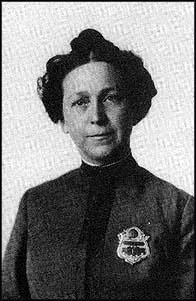 In 1909, Los Angeles social worker Alice Stebbins Wells petitioned Mayor George Alexander and the City Council, requesting an ordinance providing for a Los Angeles Policewoman be adopted. Not only was the measure passed, but on September 12, 1910, Mrs. Wells was appointed as the nation's first female policewoman with arrest powers.
In 1909, Los Angeles social worker Alice Stebbins Wells petitioned Mayor George Alexander and the City Council, requesting an ordinance providing for a Los Angeles Policewoman be adopted. Not only was the measure passed, but on September 12, 1910, Mrs. Wells was appointed as the nation's first female policewoman with arrest powers.Many California cities had employed women as matrons or workers since 1890. These employees specialized in the care of female prisoners, and worked in the City and County prisons and other penal institutions.
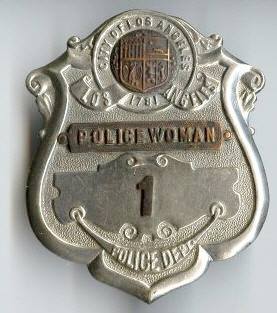 On the first day of her appointment, Mrs. Wells was furnished with a Gamewell (a telephone call box) key, a book of rules, a first aid book, and a policeman's badge. In those days, an officer was privileged to enjoy free trolley car rides while going to and from work, but when Mrs. Wells displayed her badge, the conductor accused her of misusing her husband's identity. This was remedied by presenting her with Policewoman's Badge Number One. Mrs. Wells was assigned to work with Officer Leo W. Marden, the Department's first juvenile officer. Subsequent to her appointment, the following order was issued: No young girl can be questioned by a male officer. Such work is delegated solely to policewomen, who, by their womanly sympathy and intuition, are able to gain the confidence of their younger sisters. Her first duties included supervision and enforcement of laws concerning dance halls, skating rinks, penny arcades, picture shows, and other similar places of public recreation. Among her activities were the suppression of unwholesome billboard displays, searches for missing persons, and the maintenance of a general information bureau for women seeking advice on matters within the scope of police departments. In 1911, the position of women police officers in Los Angeles was placed under Civil Service control. By October 1912, there were three policewomen and three police matrons in the Department. Mrs. Wells' appointment prompted nationwide publicity, and by 1916, her efforts in promoting the need for female officers resulted in the hiring of policewomen in 16 other cities and in several foreign countries. She was also instrumental in organizing the International Policewomen's Association in 1915. Three years later, Mrs. Wells succeeded in persuading the University of California, Southern Division (now UCLA) to offer the first course specifically on the work of women police officers. The course was introduced by the school's Criminology Department in the summer session in 1918. Mrs. Wells was named the first president of the Women's Peace Officers Association of California in 1928, a group she helped to create. In July 1934, she was promoted to the rank of sergeant and appointed the Los Angeles Police Department historian, a post she held until her retirement on November 1, 1940. She had been a policewoman for 30 years.
On the first day of her appointment, Mrs. Wells was furnished with a Gamewell (a telephone call box) key, a book of rules, a first aid book, and a policeman's badge. In those days, an officer was privileged to enjoy free trolley car rides while going to and from work, but when Mrs. Wells displayed her badge, the conductor accused her of misusing her husband's identity. This was remedied by presenting her with Policewoman's Badge Number One. Mrs. Wells was assigned to work with Officer Leo W. Marden, the Department's first juvenile officer. Subsequent to her appointment, the following order was issued: No young girl can be questioned by a male officer. Such work is delegated solely to policewomen, who, by their womanly sympathy and intuition, are able to gain the confidence of their younger sisters. Her first duties included supervision and enforcement of laws concerning dance halls, skating rinks, penny arcades, picture shows, and other similar places of public recreation. Among her activities were the suppression of unwholesome billboard displays, searches for missing persons, and the maintenance of a general information bureau for women seeking advice on matters within the scope of police departments. In 1911, the position of women police officers in Los Angeles was placed under Civil Service control. By October 1912, there were three policewomen and three police matrons in the Department. Mrs. Wells' appointment prompted nationwide publicity, and by 1916, her efforts in promoting the need for female officers resulted in the hiring of policewomen in 16 other cities and in several foreign countries. She was also instrumental in organizing the International Policewomen's Association in 1915. Three years later, Mrs. Wells succeeded in persuading the University of California, Southern Division (now UCLA) to offer the first course specifically on the work of women police officers. The course was introduced by the school's Criminology Department in the summer session in 1918. Mrs. Wells was named the first president of the Women's Peace Officers Association of California in 1928, a group she helped to create. In July 1934, she was promoted to the rank of sergeant and appointed the Los Angeles Police Department historian, a post she held until her retirement on November 1, 1940. She had been a policewoman for 30 years.
 Alice Stebbins Wells fought for the idea that women, as regular members of municipal police departments, are particularly well-qualified to perform protective and preventive work among juveniles and female criminals. She will be remembered for introducing this new concept into local law enforcement. Since her appointment, policewomen have been assigned duties in patrol, delinquency prevention, investigation of crimes involving juveniles, and investigation of other cases in which the service of a female officer is deemed necessary. By 1937, thirty-nine policewomen were employed by the LAPD. In addition, five aerial policewomen were appointed as reserve officers. These specially appointed aerial officers joined a previously all-male squadron of commercial and highly trained amateur pilots who were summoned to duty in situations requiring expert flyers. Mrs. Wells died in August 1957. Attending her funeral service as pallbearers were Deputy Chief Frank E. Walton, Jr., Inspector K.J. McCauley, Sergeants G.E. Luther and A.R. Bongard, and Policewomen Betty J. Munson, and Chloe I. Gilmore. Ten other policewomen in full dress uniform served as the Honor Guard. Interment was in Forest Lawn Memorial Park. VIA THE LAPD OFFICIAL WEBSITE
Alice Stebbins Wells fought for the idea that women, as regular members of municipal police departments, are particularly well-qualified to perform protective and preventive work among juveniles and female criminals. She will be remembered for introducing this new concept into local law enforcement. Since her appointment, policewomen have been assigned duties in patrol, delinquency prevention, investigation of crimes involving juveniles, and investigation of other cases in which the service of a female officer is deemed necessary. By 1937, thirty-nine policewomen were employed by the LAPD. In addition, five aerial policewomen were appointed as reserve officers. These specially appointed aerial officers joined a previously all-male squadron of commercial and highly trained amateur pilots who were summoned to duty in situations requiring expert flyers. Mrs. Wells died in August 1957. Attending her funeral service as pallbearers were Deputy Chief Frank E. Walton, Jr., Inspector K.J. McCauley, Sergeants G.E. Luther and A.R. Bongard, and Policewomen Betty J. Munson, and Chloe I. Gilmore. Ten other policewomen in full dress uniform served as the Honor Guard. Interment was in Forest Lawn Memorial Park. VIA THE LAPD OFFICIAL WEBSITE
Published on September 15, 2015 08:04
VINTAGE LAPD: FIRST BLACK POLICE WOMAN
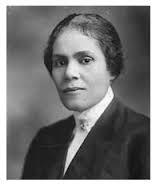 In 1916, Georgia Ann Robinson was the first Black female policewoman hired by the LAPD. At the turn of the century, this was a difficult assimilation for both other officers and arrestees. Robinson worked as a jail matron in women's detention. She also assisted detectives providing information in a number of investigations, and assisted in the questioning of female witnesses, suspects, and children. In 1928, while Robinson was working the jail, she attempted to break up a fight between two female drunks. A heavy blow to the head sustained in the fracas left Robinson permanently blinded. She was given a medical retirement. After leaving the LAPD, Robinson became a community activist. In 1954, she was responsible for the desegregation of Los Angeles County Beaches and Schools.
In 1916, Georgia Ann Robinson was the first Black female policewoman hired by the LAPD. At the turn of the century, this was a difficult assimilation for both other officers and arrestees. Robinson worked as a jail matron in women's detention. She also assisted detectives providing information in a number of investigations, and assisted in the questioning of female witnesses, suspects, and children. In 1928, while Robinson was working the jail, she attempted to break up a fight between two female drunks. A heavy blow to the head sustained in the fracas left Robinson permanently blinded. She was given a medical retirement. After leaving the LAPD, Robinson became a community activist. In 1954, she was responsible for the desegregation of Los Angeles County Beaches and Schools.Tip of the badge to Chris James
Published on September 15, 2015 07:50
September 14, 2015
VINTAGE LAPD
 Policewoman Florence Corberly joined the LAPD in 1948. In 1952, she was selected to work as a decoy to catch a dangerous rape suspect identified as Joe Parra. When Coberly encountered Para, a physical confrontation ensued.Detectives moved in and Parra was shot and killed…
Policewoman Florence Corberly joined the LAPD in 1948. In 1952, she was selected to work as a decoy to catch a dangerous rape suspect identified as Joe Parra. When Coberly encountered Para, a physical confrontation ensued.Detectives moved in and Parra was shot and killed…
 A County Coroner's inquest followed and cleared all detectives. Coberly was the star witness at the inquest and was later named Policewoman of the Year…
A County Coroner's inquest followed and cleared all detectives. Coberly was the star witness at the inquest and was later named Policewoman of the Year…
 In 1958, Coberly and her mother, Gertrude, entered a market in the San Fernando Valley. When Gertrude began putting items in her purse, LAPD officer George Sellinger, working off-duty as a store detective, arrested the two women for theft. Coberly was subsequently cleared in court. However, in an Internal Affairs hearing, she was found guilty for being present when a crime was committed...
In 1958, Coberly and her mother, Gertrude, entered a market in the San Fernando Valley. When Gertrude began putting items in her purse, LAPD officer George Sellinger, working off-duty as a store detective, arrested the two women for theft. Coberly was subsequently cleared in court. However, in an Internal Affairs hearing, she was found guilty for being present when a crime was committed... As a result, Coberly was fired by Chief William H Parker in 1958. In 1959, Coberly filed an appeal to get her job and badge back, but the ruling stood...
As a result, Coberly was fired by Chief William H Parker in 1958. In 1959, Coberly filed an appeal to get her job and badge back, but the ruling stood...Thx to Chris James...
Published on September 14, 2015 09:00
LIE CATCHERS SAMPLER
 Venture Galleries has put their spotlight on the first chapter of Lie Catchers. If you would like a preview of my latest cop novel, please click the link below to check it out... VENTURE GALLERIES In our mission to connect readers, writers, and books, Venture Galleries has launched a new series featuring writing samples from some of the best authors in the marketplace today. Monday’s Sampler is an excerpt from Lie Catchers by Paul Bishop. It is a hard-boiled mystery that reveals the insights and inner workings of two police interrogators. As one reviewer wrote: The book becomes almost like a textbook in an advanced psychology course. There are, of course, the players who make up the world of the detectives – criminals, victims, other cops and police administrators. But “Lie Catchers” really zeroes in on these two partners and how they use their special psychological gifts to literally get into the heads of the people who exist in their work. Rarely will you find the kind of insight that Bishop demonstrates in this truly 5-star book.
Venture Galleries has put their spotlight on the first chapter of Lie Catchers. If you would like a preview of my latest cop novel, please click the link below to check it out... VENTURE GALLERIES In our mission to connect readers, writers, and books, Venture Galleries has launched a new series featuring writing samples from some of the best authors in the marketplace today. Monday’s Sampler is an excerpt from Lie Catchers by Paul Bishop. It is a hard-boiled mystery that reveals the insights and inner workings of two police interrogators. As one reviewer wrote: The book becomes almost like a textbook in an advanced psychology course. There are, of course, the players who make up the world of the detectives – criminals, victims, other cops and police administrators. But “Lie Catchers” really zeroes in on these two partners and how they use their special psychological gifts to literally get into the heads of the people who exist in their work. Rarely will you find the kind of insight that Bishop demonstrates in this truly 5-star book.THE STORY
With her special abilities, top LAPD Robbery-Homicide detective “Calamity” Jane Randall thought she knew all about interrogation until she met detective Ray Pagan. Wielding a suspect’s vocal intonations, emotions, and physical gestures like a scalpel, Pagan’s empathetic lie catching abilities are legendary. Both detectives are scarred by past tragedies, but when paired together, they threaten to tear the city apart searching for a duo of missing children – a search where the right answer to the wrong question can mean sudden death. Ripped from the experiences of thirty-five year veteran LAPD detective and nationally recognized interrogator, Paul Bishop, Lie Catchers takes the reader inside the dark and dangerous mind games of the men and women for whom truth is an obsession.
THE SAMPLER
CHAPTER ONE
“Liar, liar, pants on fire. Nose as long as a telephone wire.” Author Unknown
 When I first crossed swords with Rycovic Ray Pagan, he was already an LAPD legend in the interrogation room. Detectives would take bets on how long it would take Pagan to break a suspect wide open. It was said, he never missed – always coming out of the box with something to advance an investigation. He was revered, feared, and jealousy being what it is, despised. I was a bit of a legend myself. Twelve years on the job, five as a detective, currently assigned to Robbery Homicide’s elite Rape Special unit, and I still couldn’t get away from the Calamity Jane Randall moniker hung on me during my rookie year. I’d solved my share of major cases, putting various villains in prison for more years than they had left on earth, but Calamity I’d been tagged, and Calamity I remained. A series of escalating coincidences while I was still in uniform – involving the accidental discharge of a shotgun, a sergeant’s squad car with a blown tire, and a urine soaked PCP suspect – were hard to live down.
When I first crossed swords with Rycovic Ray Pagan, he was already an LAPD legend in the interrogation room. Detectives would take bets on how long it would take Pagan to break a suspect wide open. It was said, he never missed – always coming out of the box with something to advance an investigation. He was revered, feared, and jealousy being what it is, despised. I was a bit of a legend myself. Twelve years on the job, five as a detective, currently assigned to Robbery Homicide’s elite Rape Special unit, and I still couldn’t get away from the Calamity Jane Randall moniker hung on me during my rookie year. I’d solved my share of major cases, putting various villains in prison for more years than they had left on earth, but Calamity I’d been tagged, and Calamity I remained. A series of escalating coincidences while I was still in uniform – involving the accidental discharge of a shotgun, a sergeant’s squad car with a blown tire, and a urine soaked PCP suspect – were hard to live down.FOR THE COMPLETE FIRST CHAPTER CLICK HERE
Published on September 14, 2015 06:43
September 12, 2015
LIE CATCHERS BOOK TEASER
LIE CATCHERS BOOK TEASER
CREATED BY
ANTHONY VENUTOLO
Published on September 12, 2015 19:05



